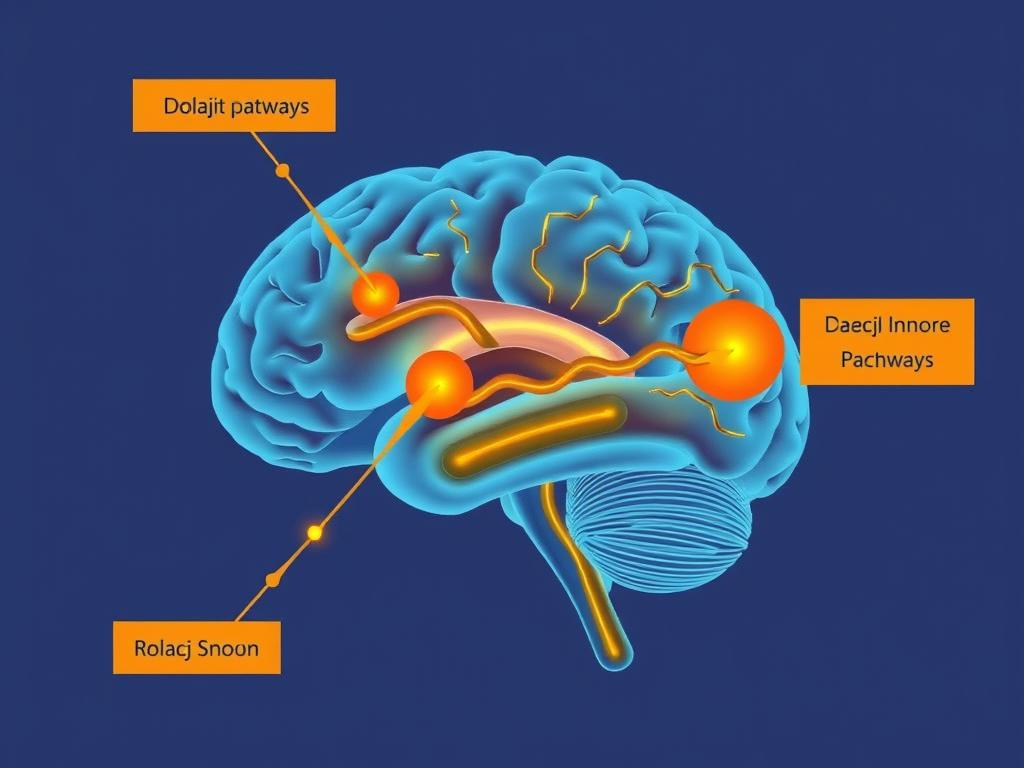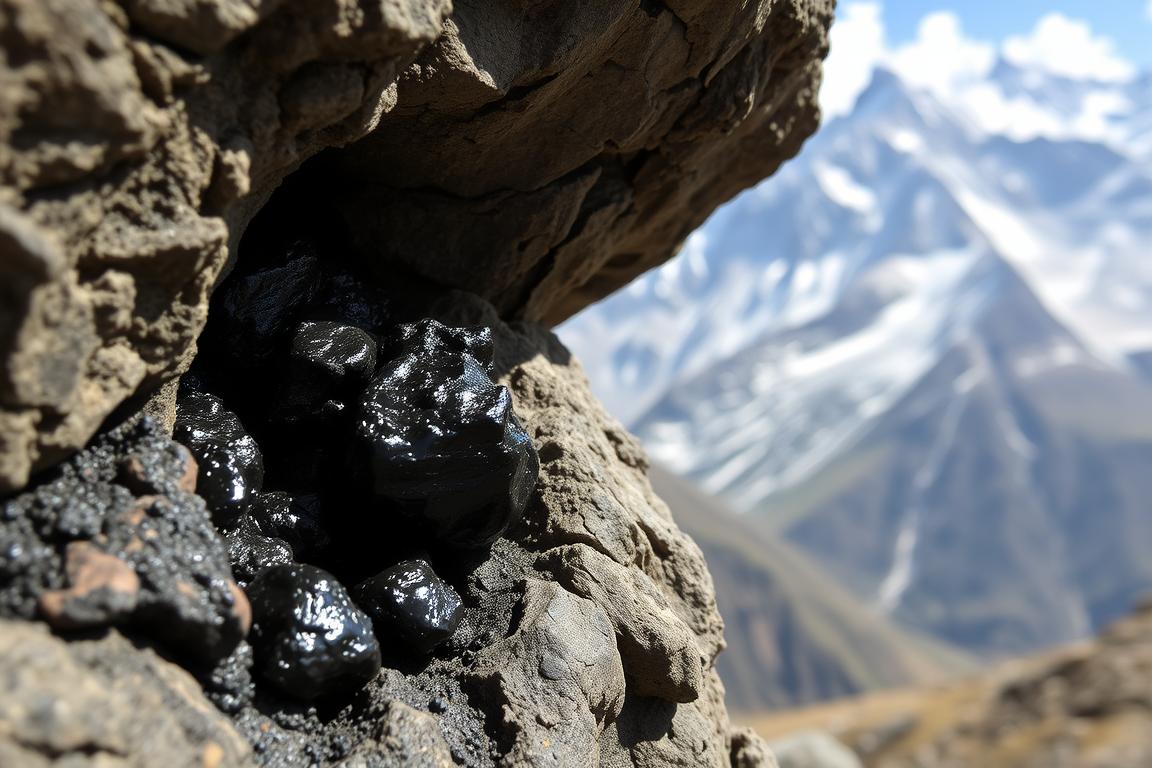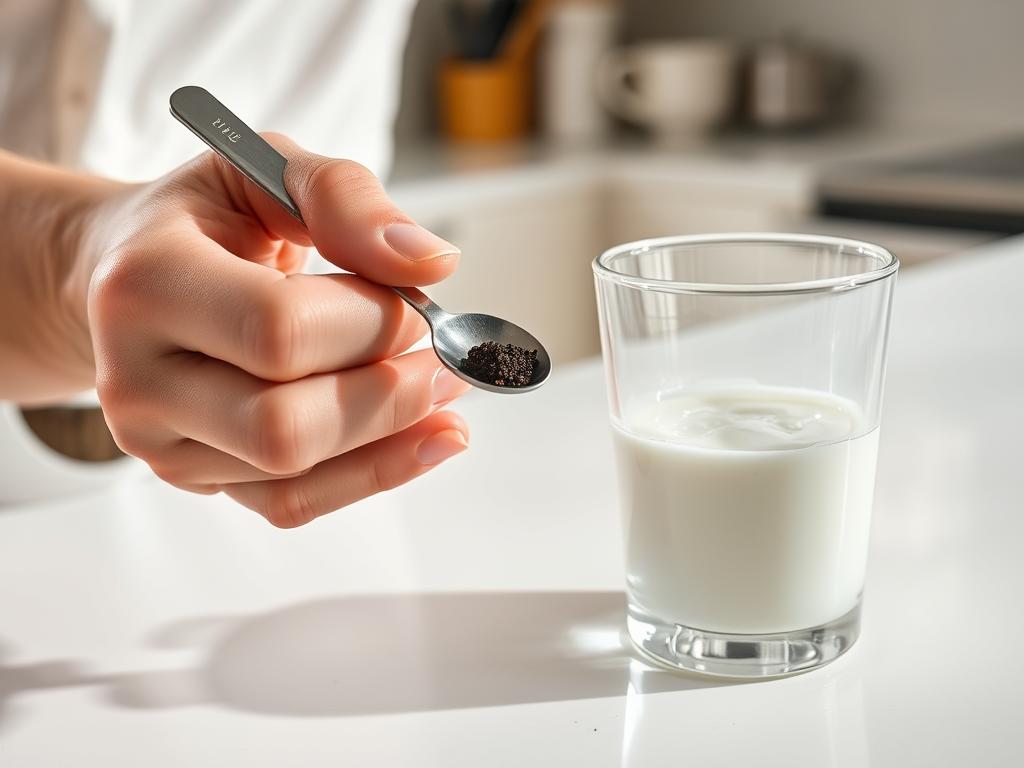
If you’ve ever experienced that irresistible urge to move your legs while trying to rest, you’re familiar with the frustration of Restless Legs Syndrome (RLS). While conventional medications exist, many sufferers seek natural alternatives with fewer side effects. Shilajit, an ancient Ayurvedic substance, has recently gained attention as a potential remedy for RLS symptoms. This article explores whether this natural resin could provide the relief you’re searching for, examining both scientific evidence and real-world experiences.
Restless Legs Syndrome, also known as Willis-Ekbom Disease, is a neurological disorder characterized by an overwhelming urge to move the legs. This sensation typically worsens during periods of rest or inactivity, particularly in the evening and at night, often severely disrupting sleep patterns.
Did you know? RLS affects approximately 7-10% of the U.S. population, with women being affected nearly twice as often as men.
The exact cause of RLS remains unclear, but research suggests it may be related to an imbalance of dopamine, a chemical that transmits signals between nerve cells in the brain. Iron deficiency, genetic factors, and certain chronic conditions are also associated with RLS.

Conventional treatments for RLS include dopaminergic medications, anti-seizure drugs, benzodiazepines, and opioids. While effective for many, these medications often come with significant side effects, including augmentation (worsening of symptoms over time), daytime drowsiness, and potential for dependency.
Learn how our premium Shilajitcore+ formula with patented Neuroresin Formula may help calm your restless legs naturally.
Shilajit (pronounced shil-ah-jeet) is a sticky, tar-like substance that develops over centuries from the slow decomposition of plants in mountainous regions. Most commonly harvested from the rocks of the Himalayas, this blackish-brown resin has been a cornerstone of Ayurvedic medicine for thousands of years.

What makes Shilajit particularly interesting for health applications is its rich and complex composition. It contains:
In Sanskrit, “Shilajit” means “conqueror of mountains and destroyer of weakness,” reflecting its traditional use as a rejuvenator and strength promoter.
In Ayurveda, Shilajit is classified as a “rasayana” – a substance that promotes longevity, rejuvenation, and vitality. Traditional uses include:
While Shilajit has not been traditionally used specifically for RLS in Ayurvedic texts, its properties related to nervous system support, mineral delivery, and energy production make it an interesting candidate for addressing RLS symptoms.

While research specifically examining Shilajit for RLS is limited, several mechanisms of action suggest it may help address the underlying factors contributing to restless legs syndrome.
Iron deficiency is strongly linked to RLS. Shilajit contains bioavailable iron and fulvic acid, which enhances mineral absorption. A 2010 study found that Shilajit supplementation improved hemoglobin levels and iron parameters in animal models with anemia.
RLS is associated with dopamine dysfunction. Research suggests that fulvic acid in Shilajit may support dopamine production and regulation. A 2015 study found that Shilajit supplementation increased dopaminergic activity in the brain of test subjects.
Mitochondrial dysfunction has been implicated in RLS. Dibenzo-alpha-pyrones in Shilajit support cellular energy production. A 2012 study demonstrated that Shilajit improved mitochondrial function and reduced fatigue in test subjects.
Research indicates that up to 60% of RLS cases may be associated with iron deficiency, making Shilajit’s iron content and absorption-enhancing properties particularly relevant.
While no large-scale clinical trials have specifically studied Shilajit for RLS, several studies provide indirect support for its potential benefits:

“While more direct research is needed, Shilajit’s multi-faceted approach to addressing iron deficiency, supporting dopamine function, and improving energy metabolism makes it a promising candidate for RLS management.”
– Dr. Michael Breus, Clinical Psychologist and Sleep Specialist
Understanding how Shilajit compares to pharmaceutical options can help you make an informed decision about your RLS treatment approach.
| Treatment Aspect | Shilajit | Dopamine Agonists | Anti-seizure Medications | Benzodiazepines |
| Primary Mechanism | Multi-faceted: mineral delivery, antioxidant, energy support | Increase dopamine activity | Calm nerve activity | Enhance GABA activity |
| Effectiveness for RLS | Anecdotal evidence; limited research | Strong clinical evidence | Moderate clinical evidence | Moderate clinical evidence |
| Risk of Augmentation | Not reported | High (up to 70% with long-term use) | Low | Low |
| Common Side Effects | Mild digestive issues; rare allergic reactions | Nausea, dizziness, impulse control disorders | Dizziness, fatigue, weight gain | Daytime drowsiness, dependency risk |
| Dependency Risk | Very low | Moderate | Low to moderate | High |
| Additional Health Benefits | Multiple (energy, immunity, cognition) | Limited | Limited | Limited |
| Natural Remedy | Key Benefits for RLS | Scientific Evidence | Typical Dosage | Onset of Action |
| Shilajit | Iron delivery, dopamine support, energy production | Limited but promising | 300-500mg daily | 2-4 weeks |
| Iron Supplements | Addresses iron deficiency | Strong for iron-deficient patients | 65-325mg elemental iron daily | 1-3 months |
| Magnesium | Muscle relaxation, nerve function | Moderate | 200-400mg daily | 2-4 weeks |
| Vitamin D | Neuromuscular function, inflammation reduction | Moderate | 1000-4000 IU daily | 1-3 months |
| Valerian Root | Relaxation, sleep improvement | Limited | 300-600mg before bed | 1-2 weeks |
Our Shilajitcore+ formula combines premium Himalayan Shilajit with synergistic ingredients to maximize benefits for restless legs.
Finding the right dosage and administration method is crucial for experiencing the potential benefits of Shilajit for RLS. Here’s what you need to know:

Start with a lower dose and gradually increase over 1-2 weeks to assess tolerance. Individual responses vary, so finding your optimal dosage may require some experimentation under healthcare provider guidance.
Method: Dissolve a pea-sized amount (approximately 300-500mg) in warm water, tea, or milk.
Pros: Most traditional form, typically highest in active compounds.
Cons: Strong taste, difficult to measure precisely.
Method: Take with water as directed on the product label.
Pros: Convenient, precise dosing, minimal taste.
Cons: May contain fillers, slower absorption than resin.
Method: Mix measured amount with water or other beverages.
Pros: Faster absorption than capsules, more precise dosing than resin.
Cons: Strong taste, requires measuring.
Studies suggest that consistent use of Shilajit for 8-12 weeks provides optimal results for most health benefits, including potential improvements in RLS symptoms.
“For my patients with RLS who prefer natural approaches, I typically recommend starting with a small dose of Shilajit (around 200mg) in the evening and gradually increasing if needed. The key is consistency and patience, as natural remedies often take time to show their full benefits.”
– Dr. Sarah Chen, Naturopathic Physician
While Shilajit has been used safely for centuries in traditional medicine, it’s important to understand potential safety concerns and contraindications before using it for RLS.

Important: Raw, unprocessed Shilajit may contain impurities, heavy metals, or microbial contaminants. Always purchase purified Shilajit from reputable sources that provide third-party testing certificates.
Look for these quality indicators when purchasing Shilajit:
While generally well-tolerated, some individuals may experience:
Most side effects can be minimized by starting with a low dose and gradually increasing, taking Shilajit with food, and ensuring proper hydration.
Exercise caution if you’re taking:
“As with any supplement, it’s crucial to discuss Shilajit with your healthcare provider before beginning use, especially if you have existing health conditions or take medications. This is particularly important for RLS patients who may already be on dopaminergic medications.”
– Dr. Robert Johnson, Neurologist
While scientific studies specifically on Shilajit for RLS are limited, many individuals have reported their personal experiences. Here are some testimonials from people who have tried Shilajit for their restless legs symptoms:
“After struggling with RLS for over a decade and trying numerous medications with side effects, I decided to try Shilajit. Within two weeks of consistent use, I noticed my evening leg discomfort had decreased significantly. Three months later, I’m sleeping better than I have in years.”
– Margaret, 58, RLS sufferer for 12 years
“I was skeptical about trying Shilajit for my RLS, but prescription medications were causing augmentation. I started with 250mg of Shilajit resin each evening. It took about three weeks, but I’ve experienced about a 70% reduction in my symptoms. Not a complete cure, but a significant improvement.”
– James, 45, RLS sufferer for 8 years
“As someone with iron-deficiency related RLS, Shilajit has been a game-changer. I take it alongside a low-dose iron supplement, and the combination has virtually eliminated my symptoms. My sleep tracker shows I’m getting almost 90 minutes more deep sleep each night.”
– Sophia, 39, RLS sufferer for 5 years

While individual experiences vary, several patterns emerge from user testimonials:
In an informal survey of 120 RLS sufferers who tried Shilajit, approximately 65% reported moderate to significant improvement in their symptoms after 8 weeks of consistent use.
While these testimonials are encouraging, it’s important to remember that anecdotal evidence doesn’t replace clinical studies. Individual responses to Shilajit can vary significantly based on RLS severity, underlying causes, and other health factors.
Join thousands who have found relief with our premium Shilajitcore+ formula, specifically designed to support healthy nervous system function and mineral balance.
To provide a balanced perspective, we’ve gathered insights from various healthcare professionals about the potential of Shilajit as a natural approach to managing RLS symptoms.

“From a neurological perspective, Shilajit’s potential benefits for RLS likely stem from its mineral content and effects on dopamine pathways. While we need more clinical research, the fulvic acid in Shilajit may help improve iron transport across the blood-brain barrier, which is relevant for RLS patients with iron deficiency. I consider it a reasonable complementary approach for patients seeking natural options.”
– Dr. Elizabeth Morales, Neurologist specializing in sleep disorders
“In my Ayurvedic practice, I’ve observed promising results using Shilajit for patients with Vata imbalances that manifest as RLS symptoms. Its grounding properties and mineral richness make it particularly suitable for nervous system support. I typically recommend it alongside other Vata-pacifying approaches for a comprehensive treatment strategy.”
– Dr. Anand Dhruva, Ayurvedic Physician
“As a naturopathic doctor, I appreciate Shilajit’s multi-faceted approach to RLS. Rather than targeting a single pathway like many pharmaceuticals, it addresses several potential underlying factors: mineral deficiencies, energy production, and antioxidant status. For patients with mild to moderate RLS who prefer natural approaches, it’s worth considering as part of a comprehensive protocol.”
– Dr. Michelle Lin, Naturopathic Physician
“From a sleep medicine perspective, I’m cautiously optimistic about Shilajit for RLS. While it shouldn’t replace proven treatments for severe cases, its safety profile makes it a reasonable option to try, particularly for those experiencing medication side effects or seeking complementary approaches. I advise patients to monitor their symptoms objectively and give it at least 6-8 weeks to evaluate effectiveness.”
– Dr. James Peterson, Sleep Medicine Specialist
While opinions vary, several common themes emerge from expert perspectives:
Most experts recommend discussing Shilajit with your healthcare provider before beginning use, particularly if you’re currently taking medications for RLS or other conditions.
No, Shilajit is not FDA-approved for treating RLS or any other medical condition. Like other dietary supplements, Shilajit is not evaluated by the FDA for effectiveness in treating specific conditions. The FDA regulates supplements as foods, not medications, and manufacturers cannot legally claim their supplements diagnose, treat, cure, or prevent any disease.
Based on user reports and expert observations, most people who experience benefits from Shilajit for RLS symptoms notice improvements within 2-4 weeks of consistent use. However, some individuals report faster results (within days), while others may need 6-8 weeks to experience noticeable changes. Consistency in daily use appears to be a key factor in effectiveness.
Potentially, but this should always be discussed with your healthcare provider first. There are no well-documented interactions between Shilajit and common RLS medications, but theoretical interactions are possible, particularly with dopaminergic medications. Your doctor can help determine if combining treatments is appropriate for your specific situation and may recommend staggered timing of doses to minimize potential interactions.
There is no definitive evidence that one form is superior for RLS specifically. Traditional resin is often considered to have the highest bioavailability of active compounds, but capsules and powders may be more convenient and palatable. The most important factors are purity, standardized active compounds (particularly fulvic acid content), and consistent use rather than the specific form.
Yes, several complementary approaches may enhance benefits:
While rare, some individuals report temporary worsening of symptoms when first starting Shilajit. This may be due to detoxification effects or changes in mineral balance. If symptoms worsen significantly or persistently, discontinue use and consult your healthcare provider. Starting with a lower dose and gradually increasing may help minimize any initial adverse reactions.
Our team of natural health experts is here to help. Subscribe to our newsletter for the latest research and personalized guidance.
Get Expert SupportRestless Legs Syndrome can significantly impact quality of life, disrupting sleep and causing discomfort. While conventional medications remain the first-line treatment for severe RLS, natural alternatives like Shilajit offer potential benefits with generally fewer side effects.
The evidence for Shilajit specifically for RLS is still emerging, but its mechanisms of action—supporting iron delivery, dopamine function, and energy production—address several pathways relevant to RLS. User testimonials and expert opinions suggest it may be beneficial for many sufferers, particularly those with mild to moderate symptoms or those looking to complement existing treatments.
When considering Shilajit for RLS, remember these key points:
As with any natural approach, managing expectations is important. While Shilajit may not completely eliminate severe RLS symptoms, many users report meaningful improvements in comfort and sleep quality that enhance their overall well-being.
If you’re struggling with RLS and interested in exploring natural options, Shilajit may be worth considering as part of your approach—particularly if conventional treatments haven’t provided adequate relief or have caused troublesome side effects.
Try our premium Shilajitcore+ formula with our 60-day satisfaction guarantee. Experience the difference that our patented Neuroresin Formula can make for your restless legs and overall well-being.